Pros and Cons of PVC Panels
Plastic panels, like any other decorative material for a bathroom, have their advantages and disadvantages.
| pros | Minuses |
|---|---|
|
|
Which panels are better to choose?
The design of a bathroom made of plastic panels begins with their right choice. Today, there are many different types of pvc panels for the bathroom, they differ both in shape and size, and in texture and method of fastening.
In its shape, 3 types of plastic panels can be distinguished:
- Rack and pinion. In appearance they resemble an ordinary lining. They come in different widths; they are installed both on the frame and on glue. It is convenient to use trims to finish the bathroom in a non-standard shape with various angles and protrusions. In addition, with their help, you can visually raise the ceilings (if installed vertically) or move the walls (for horizontal installation). The width of standard products in the range of 10-30 cm, height - 90-300 cm.
- Tiled. The budget alternative to tile has the same shape as a square. Often they imitate mosaic, marble or concrete. The main advantage of this type is the integrity of the structure, which is achieved through special fastenings on the tiles. The sizes of tiles vary from 10 * 10 cm, but 30 * 30, 100 * 100 cm are considered standard.
- Leafy. The larger the material, the fewer joints, and this is important for the bathroom. After all, moisture penetrating into the joints provokes the formation of a fungus. In addition, you can repair even a large bathtub with large sheets in just a few hours. The width of the sheet reaches 50 cm, and the length is 260-300 cm.
Conclusion: For the design of the bathroom, decide on the priorities: visual correction of the room, no joints or installation speed. This will tell the ideal shape of pvc panels.
The thickness is distinguished:
- Up to 0.5 cm.This thin and fragile material is best used for decorating the ceiling.
- 0.8-1 cm. Thick panels are more durable and suitable for wall decoration. In addition, they are protected from mechanical stress and burnout in the sun.
Conclusion: For wall cladding in the bathroom, use trims 0.8-1 cm thick.
In the photo, the bathroom is finished with black plastic panels
PVC panels also differ in surface technology and appearance:
- Offset printing. It is steady against ultraviolet, protected from moisture, scratches and other damages. Enhanced with varnish.
- Thermal printing. There is no varnish protective coating; the pattern can be easily damaged and even erased.
- Lamination. Drawing on a panel of a film with a relief surface is considered the most durable option and has maximum resistance to damage.
Conclusion: Offset printing is recommended in the bathroom, and it is better to install laminated lamellas around the bathroom itself.
Another difference between pvc panels is the connection method.
- Seamless. Most often these are ceiling slats. Assume the installation as close as possible to each other, the seam becomes almost invisible.
- Rusty. Otherwise, beveled lamellas. Also adhere to each other, forming a single web. They decorate the walls and ceiling.
- Embossed. The uneven coating of the plastic panels mask the seam, so that the space becomes solid. This is the most suitable option for walls, in addition, it is resistant to damage. But the cost of such finishes will increase significantly.
Conclusion: Walls in the bathroom decorate with relief or rust panels.
There are 2 ways of fastening:
- Wireframe. Lamels are installed on a wooden or metal crate. The main advantage of the method is the absence of the need to prepare the walls. In addition, in the frame you can hide communications - pipes, ventilation or wires. The disadvantages are the cost (the frame can be more expensive than the trims themselves) and the decrease in the bathroom area by 5-7 cm.
- Frameless. The panels are attached directly to the wall with glue, screws or staples. Only suitable for smooth walls and complicates the replacement of 1-2 battens if necessary. But it does not make the room smaller and saves time and money on the frame.
Conclusion: Choose the installation method based on the size of your bathroom and the smoothness of the walls in it.
We summarize - when choosing PVC panels for a bathroom, first of all, pay attention to the following nuances:
- thickness from 0.8 cm;
- offset printing or lamination;
- relief lamellas or with a facet;
- availability of environmental safety certificate;
- number of stiffeners - the more the better;
- serviceability of castle connections;
- the quality of the coating and the correct docking pattern.
Interesting ideas in bathroom design
To make the room’s interior stylish and modern, you can combine plastic slats with other materials or with each other.
Standard set - lamellas and ceramic tiles. You can tile the shower area, and panel the entire rest of the area. If you choose lamellas that mimic the mosaic, it will be easiest to combine them.
An option for large bathrooms is a combination with wallpaper. Near the toilet and the washing machine, install the lamellas to the middle of the wall, and glue the wallpaper above.
You can also combine plastic panels with paint. Species with simulated texture will look great with plain painted walls.
Symbiosis with decorative plaster will benefit when using contrasting plain lamellas.
In the photo, a real example of finishing a combined bathroom with pvc panels
The combination of different types of plastic is a simple but effective way to design a bathroom. Combine 2 textures (concrete and wood, matte and glossy), color or size to get an interesting effect. As an option - sheathe the walls and ceiling with two different types.
You can create a modern bathroom with the same panels, if you choose a successful print:
- imitation of wood will become a decoration of a country house or garden, while, unlike natural material, plastic is not afraid of water;
- imitation of ceramic tiles with the image of borders and columns will facilitate the implementation of the classic interior;
- panoramic photo printing visually increases the space and is suitable for a small bathroom.
Tip: When buying panels with photo printing, be sure to check how the finished wall will look - for this, attach several panels to each other and move a couple of meters back.
In the photo, a combination of tiles and pvc panels
Plastic panels are selected based on the style:
- plain light (white, gray) panels in combination with metal planks or skirting boards fit perfectly into minimalism, hi-tech or modern;
- wood imitation is suitable for country apartments;
- Planks in pastel colors are plain or with a small floral pattern - what you need in Provence;
- plastic masonry or concrete sheet panels will be an excellent basis for a loft;
- the color scheme in bright red, blue, yellow shades is justified by the fusion style.
In the photo a bathroom in a marine style
White plastic panels are universal and suitable not only for minimalistic design. They can be combined with bright wallpaper, mosaics or colored lamellas. Or create a completely white bathroom in the Scandinavian style, complementing the interior with wooden furniture.
On the photo are white pvc panels
Photo gallery
Plastic panels are a versatile material that is perfect for decorating bathrooms and toilets. But before buying them - evaluate all the pros and cons, as well as determine the criteria for choosing high-quality slats.





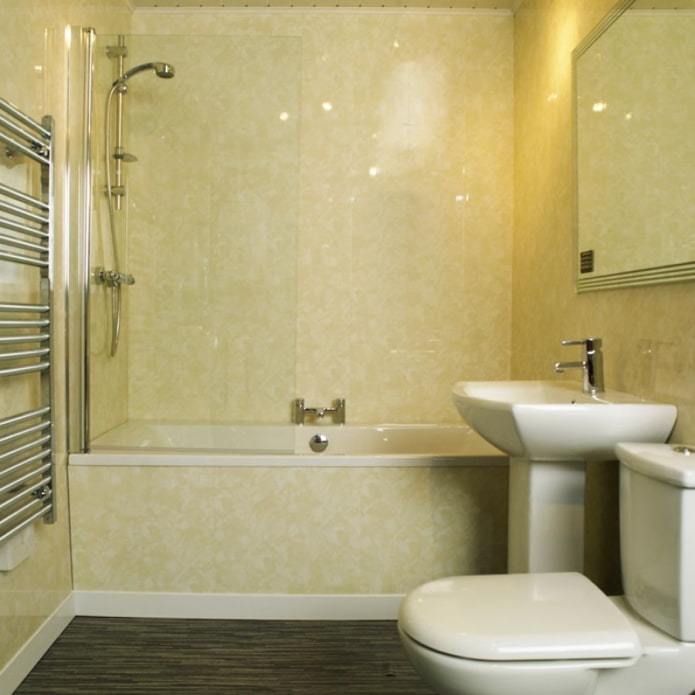

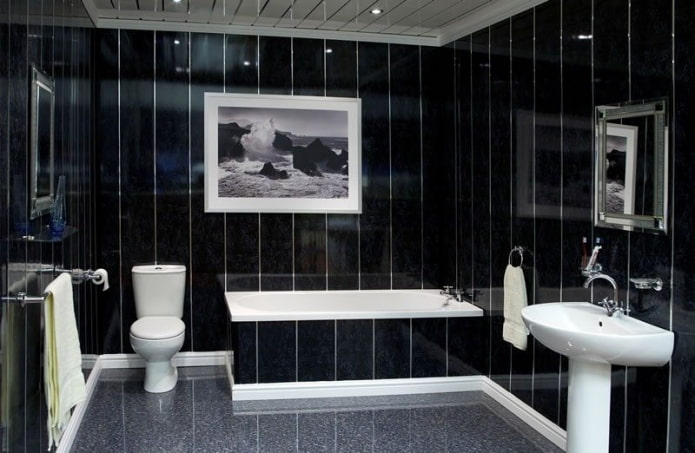
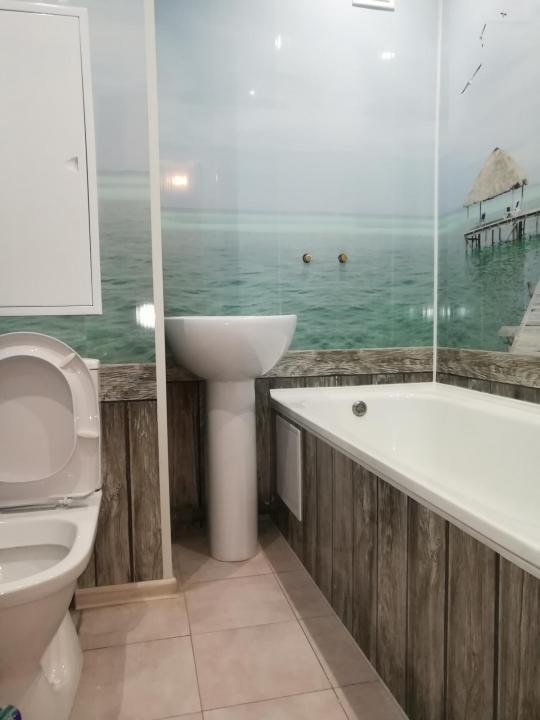

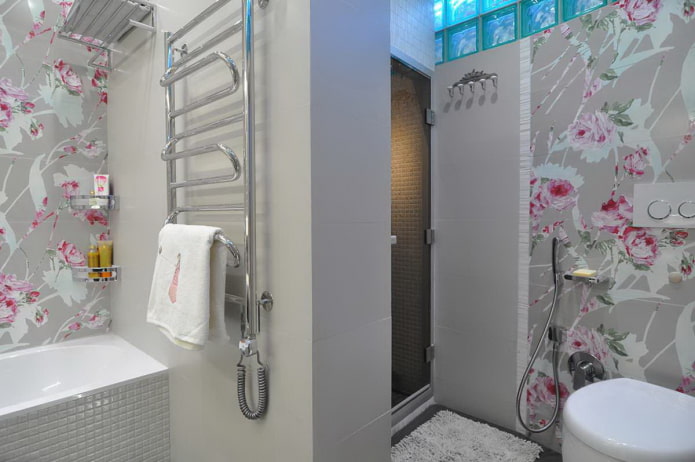
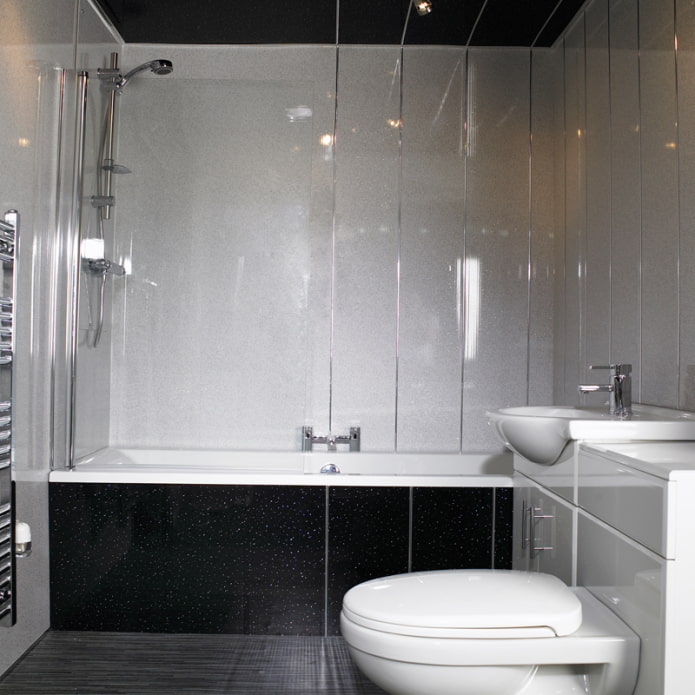
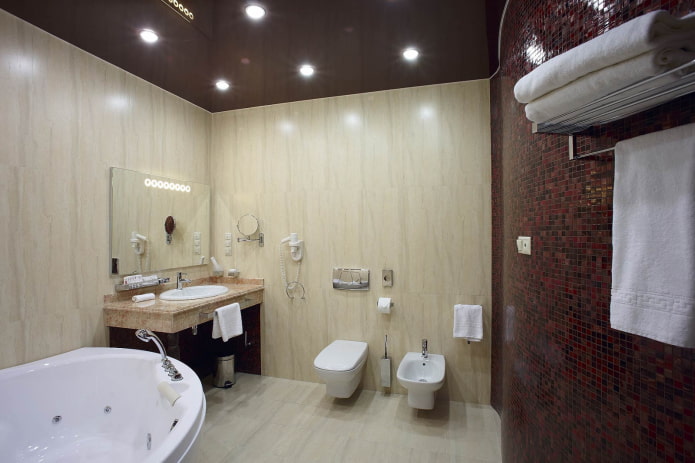
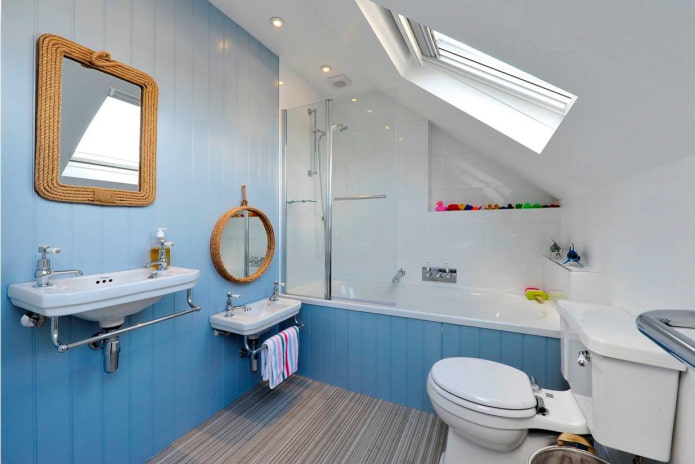
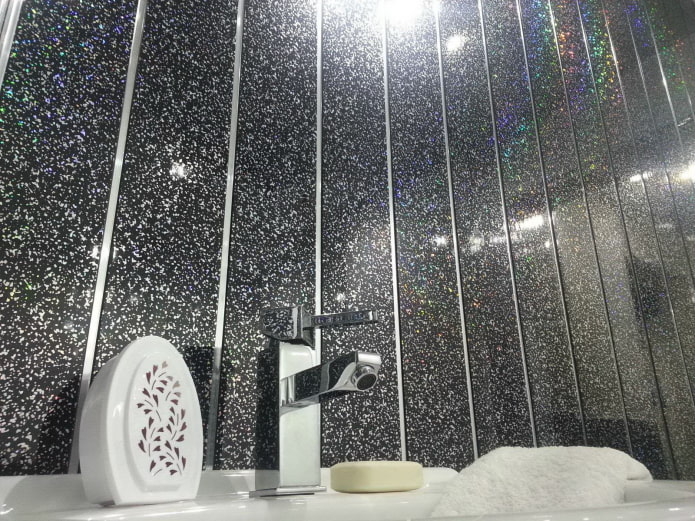
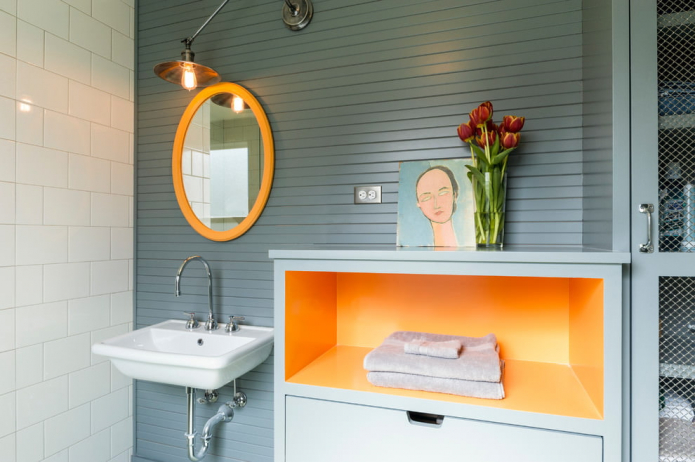

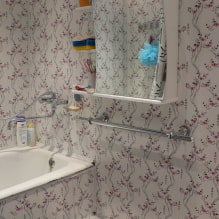

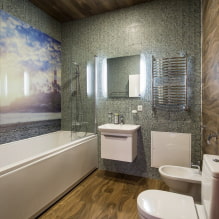
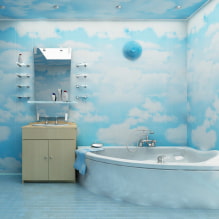
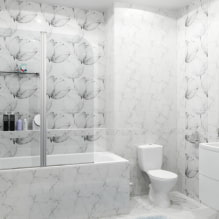
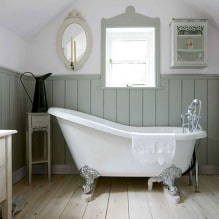
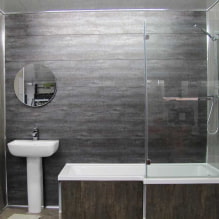

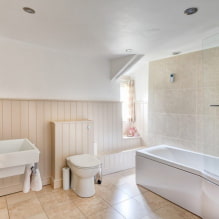

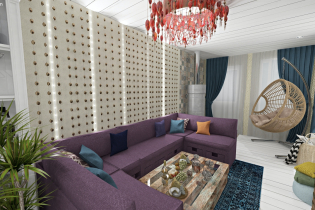 Layout of the apartment: how not to make a mistake?
Layout of the apartment: how not to make a mistake? Stretch ceiling in the bathroom: pros and cons, types, 55 photos in the interior
Stretch ceiling in the bathroom: pros and cons, types, 55 photos in the interior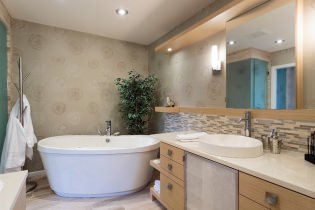 Wallpaper for the bathroom: pros and cons, views, design, 70 photos in the interior
Wallpaper for the bathroom: pros and cons, views, design, 70 photos in the interior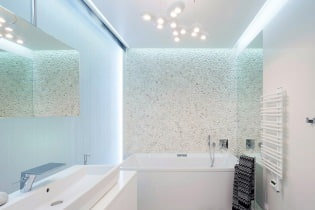 The interior of the bathroom in a modern style: 60 best photos and ideas for design
The interior of the bathroom in a modern style: 60 best photos and ideas for design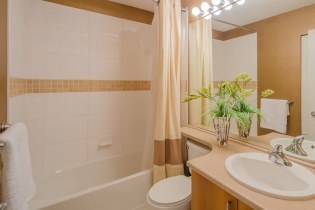 Modern design of a small bathroom: the best photos and ideas
Modern design of a small bathroom: the best photos and ideas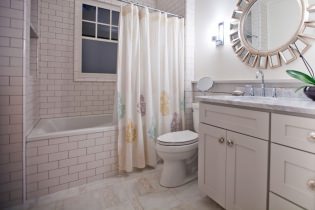 Bathroom blinds: types, materials, mounting methods
Bathroom blinds: types, materials, mounting methods